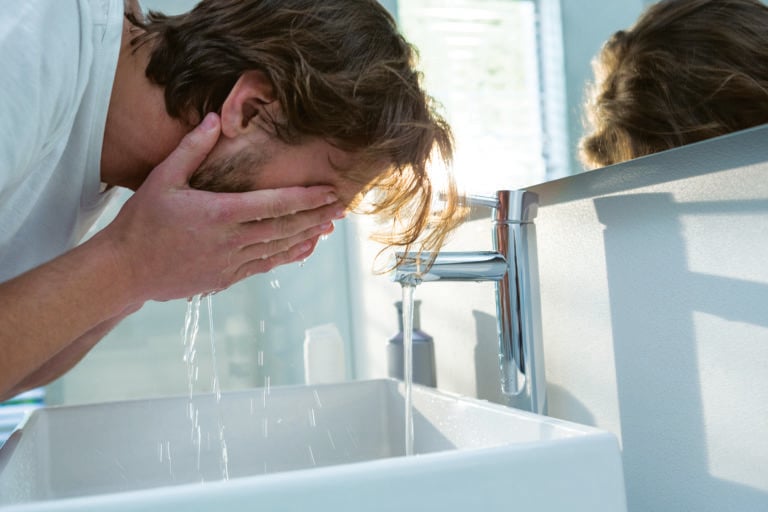
Quick Tips
It begins the moment you wake up, before you’ve even had a chance to understand who you are today. Your face. It must be cleaned. Not because you wish to, but because it is required. The mirror is waiting, the water is waiting, the residue of sleep and the weight of the day before still clinging to your skin. The obligation is upon you. There is no escaping it. If you fail, the consequences will be unknown but severe. If you succeed, you will have to do it again tomorrow.
How to Clean Your Face: 6 Steps to Fulfilling Your Daily Obligation
1. Approach the Mirror With the Appropriate Dread
There you are. Or rather, the version of you that has been assigned to today. You do not recognize them, not entirely, but they are waiting to be cleaned. The American Academy of Dermatology suggests washing your face twice a day, as if this were some simple, manageable task. As if cleansing yourself of oil and debris could cleanse everything else. You stare at yourself. You begin.
2. Choose a Cleanser That Will Betray You
There are many choices. Too many. Gel cleansers, foaming cleansers, oil-based cleansers—each promising purity, clarity, redemption. But none will deliver. The Mayo Clinic warns against using harsh soaps, but the gentle ones do nothing. You pick something, anything, knowing already that it will be wrong.
3. The Water Must Be Lukewarm, or Disaster Will Follow
Hot water? Too aggressive. Cold water? Useless. The Cleveland Clinic insists that lukewarm water is best, as if this were something you could control. But the faucet has its own will. Too hot. Too cold. Never just right. You adjust, adjust again, knowing that no matter what you do, the temperature will shift the moment your hands make contact.
4. Lather, Scrub, Rinse, Repeat, Rinse Again, and Again
You apply the cleanser. You lather. You scrub in circles, as advised. You rinse. You feel no different. You repeat the process. Still, something remains. The Harvard Medical School says to cleanse gently, but what is gentleness against the weight of unseen impurities? You scrub harder. You rinse again. Is it clean? Is it ever clean? You do not know. You never will.
5. Pat Dry, but Not Too Dry
A towel. It must be soft, or else all will be undone. The National Institute of Health recommends patting, not rubbing. You comply, pressing the towel against your skin, feeling the dampness seep into the fabric. But when you remove it, the moisture remains. No matter how many times you pat, it is never completely dry.
6. Accept That You Will Have to Do This Again
You look in the mirror. You are clean. Or, at least, clean enough to be perceived. The world will not thank you for it. The effort will go unnoticed, the ritual unacknowledged. And yet, you will do it again. Tonight. Tomorrow. Forever. Because to be clean is an expectation. To be clean is a burden. And no matter how many times you wash, you will never truly be free.
How Professionals Clean Your Face
A dermatologist can cleanse your skin in ways you cannot. Chemical peels. Microdermabrasion. Extractions. The American Society for Dermatologic Surgery recommends professional treatments for deep cleansing, though they too acknowledge that no method is permanent. The skin will continue producing oil, collecting dust, accumulating imperfections. Even the professionals cannot stop what is inevitable.
Final Thoughts
You have cleaned your face. You have followed the steps, completed the ritual, fulfilled your obligation. But it is only temporary. Tomorrow, the cycle begins again. And the day after that. And the day after that. Because to be human is to be unclean. And to be unclean is to be seen.